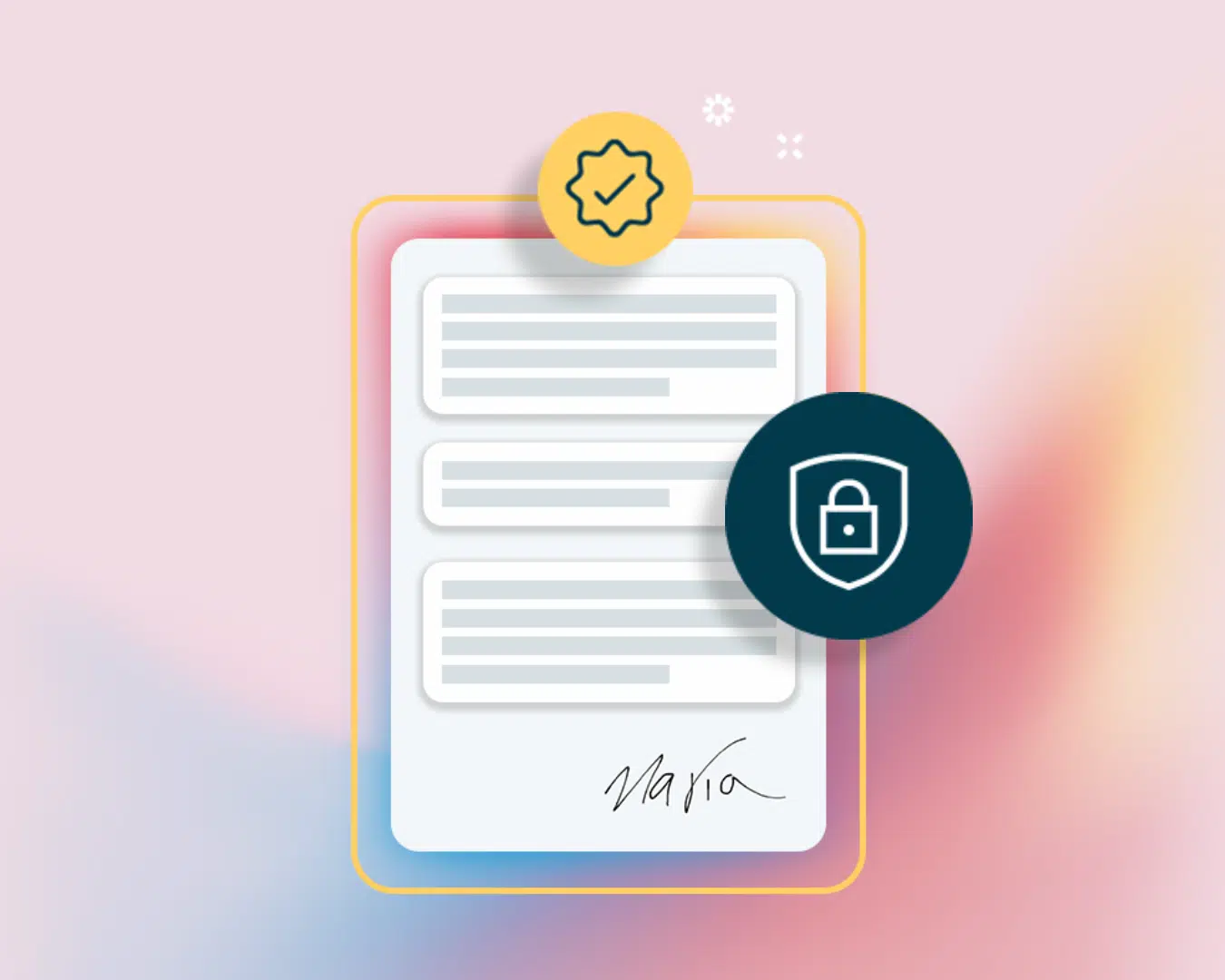In today’s fast-paced world, the banking and financial industries have undergone a remarkable transformation. Traditional paper-based processes are being replaced by innovative solutions that streamline operations and improve customer experiences. One such solution that has gained popularity is the use of electronic signatures, commonly known as esignatures. In this article, we will explore how esignatures are revolutionizing the banking and financial sectors, from the basics to their future potential.
Understanding esignatures
Before diving into the impact of esignatures, it is essential to grasp the basics. Esignatures are electronic versions of handwritten signatures that are used to authenticate documents. They provide a legally binding way for individuals and organizations to sign agreements, contracts, and other important paperwork.
When it comes to the world of electronic signatures, there is much more than meets the eye. These digital signatures eliminate the need for physical signatures, allowing for a fully digital process. In today’s fast-paced and interconnected world, the convenience and efficiency offered by esignatures cannot be overstated.
But how exactly do esignatures work? Esignatures are created using sophisticated encryption algorithms that ensure the integrity and security of the signed documents. These algorithms make it virtually impossible for anyone to tamper with the signature or the contents of the document. This level of security is crucial, especially when dealing with sensitive information or high-stakes agreements.
Moreover, esignature solutions often come with additional features that enhance the overall signing experience. For example, timestamps and audit trails are commonly included in esignature software. These features provide a comprehensive record of the signing process, making it easy to track and verify the authenticity of the signatures.
Read also: All you need to know about E-Signatures

The basics of esignatures
Esignatures eliminate the need for physical signatures, allowing for a fully digital process. They are created using sophisticated encryption algorithms that ensure the integrity and security of the signed documents. Esignature solutions often include features like timestamps and audit trails, providing a comprehensive record of the signing process.
When it comes to the legality of esignatures, it is important to note that they hold the same legal weight as traditional handwritten signatures. Laws and regulations, such as the Electronic Signatures in Global and National Commerce Act (ESIGN Act) in the United States and the eIDAS Regulation in the European Union, recognize the validity of esignatures. This recognition has paved the way for widespread adoption of esignatures across various industries.
With the legal validity of esignatures established, banks and financial institutions can confidently embrace and implement esignature solutions. This has revolutionized the way financial transactions are conducted, making it faster, more secure, and more convenient for both customers and institutions.
The legal validity of esignatures
While the use of esignatures may seem novel, they hold the same legal weight as traditional handwritten signatures. Laws and regulations, such as the Electronic Signatures in Global and National Commerce Act (ESIGN Act) in the United States and the eIDAS Regulation in the European Union, recognize the validity of esignatures. As a result, banks and financial institutions can confidently embrace and implement esignature solutions with peace of mind.
But the impact of esignatures goes beyond the financial sector. In today’s digital age, businesses across various industries are leveraging esignatures to streamline their operations. From real estate transactions to healthcare consent forms, esignatures have become a staple in modern business practices.
Furthermore, the adoption of esignatures has significant environmental benefits. By eliminating the need for physical paperwork, esignatures help reduce paper waste and carbon footprint. This aligns with the growing global movement towards sustainability and responsible business practices.
Read also: Are electronic signatures legal?

The impact of esignatures on banking operations
With the understanding of esignatures in place, let’s explore their profound impact on banking operations.
Streamlining loan approval processes
Traditionally, obtaining a loan involved a cumbersome paperwork-heavy process. Countless documents and forms needed to be reviewed, signed, and exchanged between the borrower, lender, and other involved parties. Esignatures simplify this process by allowing borrowers to sign loan agreements digitally, eliminating the need for physical document transfers and reducing administrative burdens. As a result, loan approval processes are accelerated, ensuring a smoother and more efficient experience for both borrowers and financial institutions.
Enhancing customer onboarding
Customer onboarding plays a crucial role in the banking industry. Traditionally, the process involved customers visiting branches, filling out numerous forms, and providing physical signatures. Esignatures revolutionize customer onboarding by enabling remote account opening and reducing the need for physical visits. With just a few clicks, customers can securely sign account opening documents online, providing a convenient and efficient onboarding experience. An example of banks using this is virtual banks because they operate exclusively online. This not only saves time but also improves customer satisfaction and retention.
Esignatures and financial services
Beyond traditional banking operations, esignatures have the potential to transform various aspects of financial services.
Improving investment management
Investment management often involves extensive paperwork, including account opening forms, prospectuses, and investment agreements. Esignatures streamline the entire process, making it faster and more convenient for investors to sign relevant documents electronically. This not only saves time but also reduces errors associated with manual data entry, ensuring accurate and efficient investment management.
Facilitating insurance transactions
Insurance transactions typically involve multiple forms and documents that require signatures from policyholders. Esignatures simplify the insurance purchasing process by allowing policyholders to sign policy documents digitally, eliminating the need for physical paperwork and reducing processing time. This digital transformation enhances customer convenience and empowers insurance companies to deliver superior experiences.
Read also: 10 types of documents every business needs

Security aspects of esignatures in banking
Security is of utmost importance in the banking industry. Esignatures provide robust security features to safeguard sensitive information.
Esignature encryption and authentication
Esignature solutions employ advanced encryption techniques to safeguard the integrity and confidentiality of signed documents. Additionally, authentication mechanisms ensure that only authorized individuals can sign or access sensitive information. These security measures instill trust, ensuring the integrity and privacy of critical banking documents.
Protecting against fraud with esignatures
Fraud is a significant concern for banks and financial institutions. Esignatures help combat fraud by creating a digital audit trail of the signing process. Timestamps, IP addresses, and digital certificates provide a robust framework for verifying the authenticity of signed documents, making it difficult for fraudsters to replicate or tamper with signatures. By leveraging esignature technology, banks can enhance fraud prevention measures and protect their customers’ interests.
Read also: Everything you need to know about electronic contracts

The future of esignatures in the financial sector
As technology continues to advance, the future of esignatures in the financial sector looks promising.
Predicted trends for esignatures
In the coming years, we can expect increased adoption of mobile-enabled esignature solutions. With smartphones becoming ubiquitous, mobile-friendly esignature platforms will bring convenience and accessibility to a new level. Furthermore, the integration of artificial intelligence (AI) and machine learning (ML) algorithms will enhance the efficiency and accuracy of document processing, ensuring seamless and error-free esignature experiences.
Potential challenges and solutions
Despite their many benefits, the widespread adoption of esignatures may face a few challenges. One such challenge is the varying legal frameworks across different regions. However, the establishment of international standards and harmonization efforts will bridge regulatory gaps and facilitate global acceptance of esignatures. Additionally, educating stakeholders about the security, validity, and ease of use of esignatures will alleviate any concerns or resistance.
The key takeaways
Esignatures are reshaping the banking and financial industries by simplifying processes, improving efficiency, and enhancing security. As technological advancements continue to unfold, financial institutions that embrace esignatures will be at the forefront of digital transformation, providing a seamless and customer-centric experience. By leveraging esignatures, the banking and financial sectors can revolutionize how business is conducted and usher in a new era of convenience, trust, and innovation.








